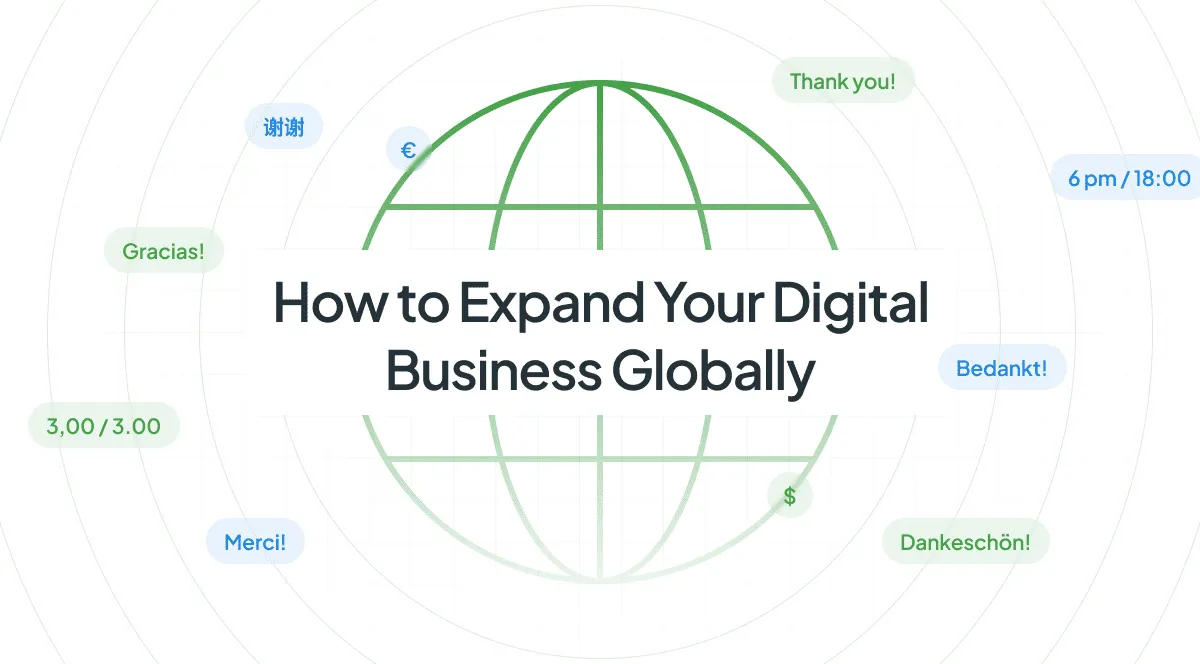Expanding your digital business across borders might sound complex, but it’s more possible than ever. Despite this, fewer than 1% of U.S. companies currently sell overseas. That leaves a massive, largely untapped opportunity for digital-first businesses willing to take the leap.
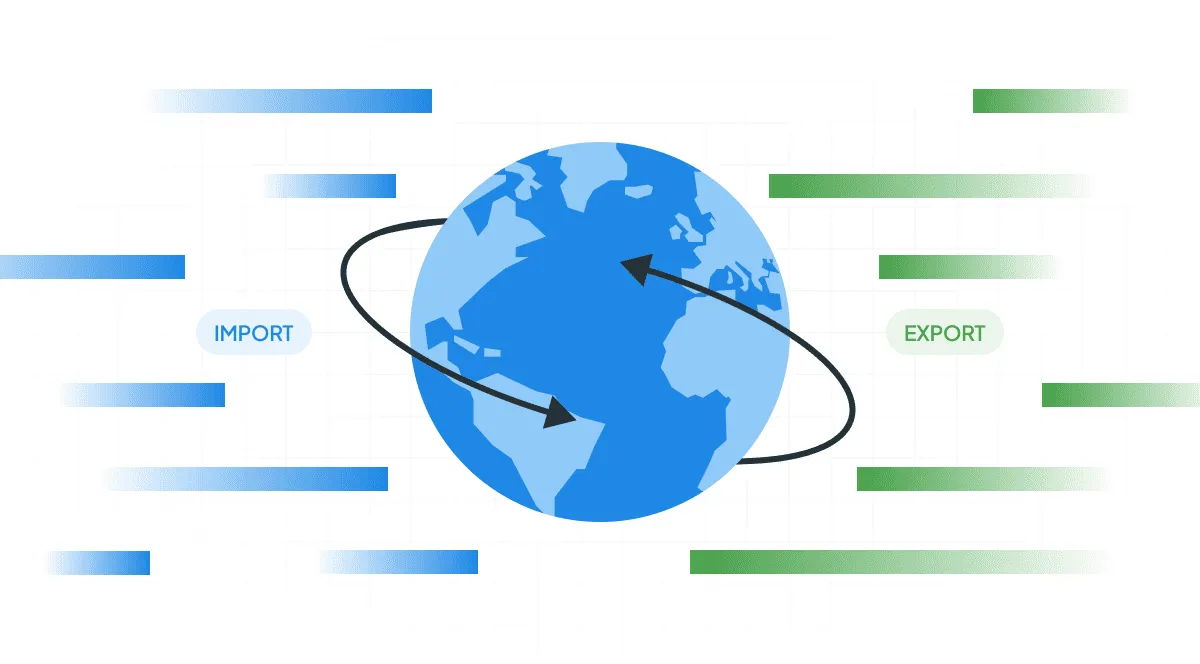
But going global isn’t just about being online. It’s about connecting with real people, in different countries, on their own terms. That means understanding how they browse, buy, and engage (and shaping your business around that). Translation alone won’t cut it. You need experiences that feel truly local.
Let’s break down what it takes to build a sustainable, scalable global expansion strategy in today’s digital economy.
Understanding the Global Digital Marketplace
The digital marketplace is vast, fast-moving, and culturally diverse. Businesses that want to grow internationally must first recognize that going global means more than duplicating their current website in another language.
User behavior varies by region. For example, mobile-first markets like India or Nigeria may need lighter, faster digital products, while desktop-heavy countries in Europe may expect richer experiences. Payment methods, customer support expectations, and even how users interact with content all shift from region to region.
This is where cultural intelligence matters. To engage global audiences, you need to understand what motivates them to act, what builds trust in their market, and how to adapt your offer to fit local values and expectations.
Building Your Global Expansion Foundation
Solid international growth starts with research. Before entering new markets, take the time to analyze local demand, legal requirements, consumer behavior, and competitive landscapes.
Rather than going wide right away, start narrow. Focus on two or three markets where your product solves a real local problem. Learn from that initial expansion, then scale from there.
On the tech side, cloud-based infrastructure is key. You need systems that scale with you, give you real-time performance insights across regions, and let you stay agile as conditions shift. This kind of foundation ensures you’re not just present in other markets — you’re set up to succeed in them.
Mastering Multilingual Digital Marketing
Reaching a global audience means more than just translating your headlines. Multilingual digital marketing is about cultural alignment.
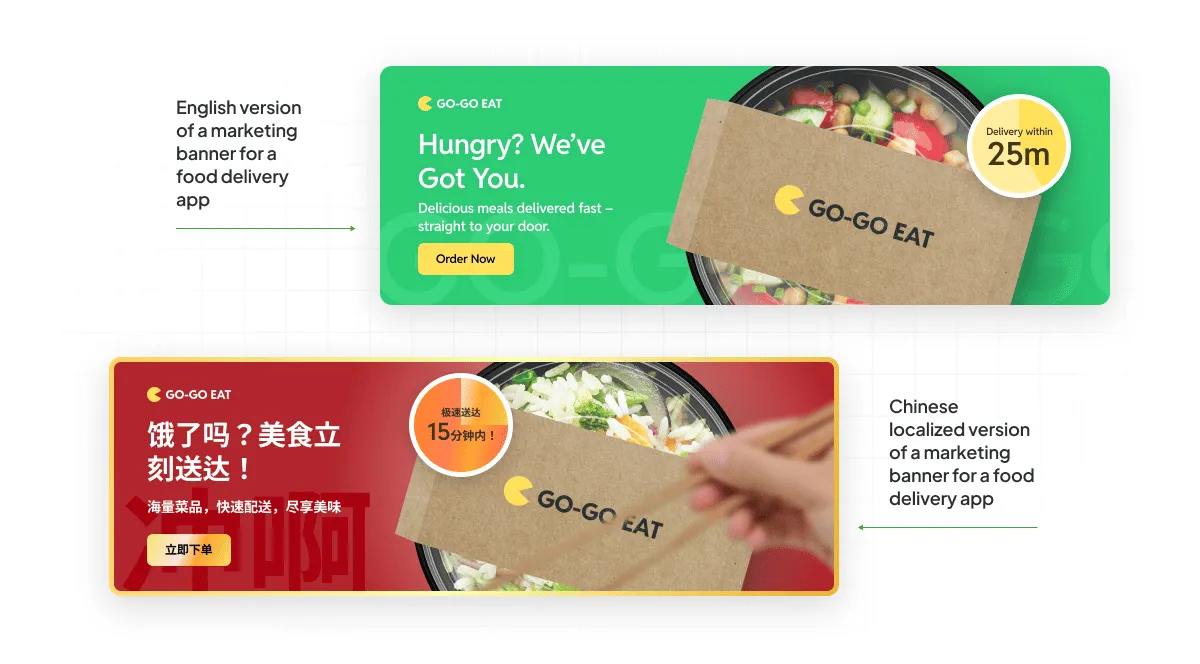
What works in one market may not resonate elsewhere. Humor, tone, colors, imagery, even design patterns — all of it needs to reflect local preferences. In China, your brand might thrive on WeChat or Xiaohongshu. In Germany, success may come from Google Ads and local SEO (read our article to learn more about multilingual SEO).
You’ll also want to localize your messaging, not just translate it. This includes adapting calls to action, refining value propositions, and reworking visuals to reflect what “professional,” “friendly,” or “reliable” looks like in that culture.
Partnering with native speakers or local experts makes all the difference here.
Technology Solutions for Global Scaling
To scale globally, your tech stack must support localization from day one.
E-commerce platforms (eg. Shopify or WooCommerce) offer built-in international capabilities. These include currency conversion, payment options suited to local markets, and shipping integrations.
You’ll also want to invest in multilingual CRMs, analytics dashboards, and customer support tools that help you track and respond to behavior across languages and time zones.
Crucially, you’ll need a reliable localization workflow. Lara Translate, for example, gives you business-ready real-time translations, while preserving tone and meaning. Pair it with Crowdin to manage localization workflows, streamline handoffs between teams, and launch updates in every language simultaneously.
The Role of Professional Translation in Global Expansion
Expanding a digital business globally means translating a lot of content. But not all content is created equal. A user guide needs a different tone than a landing page. Marketing copy needs to inspire, while legal terms must be precise.
That’s why professional translation is so important. While AI tools can speed up workflows, human translators still bring essential insight. Like knowing which phrases work culturally, or how to avoid a misstep that could damage your brand.
High-quality translation helps you build credibility in new markets. It shows respect for your audience. And it plays a critical role in onboarding, engagement, and retention.
Lara Translate: Built for Business Growth
Lara Translate isn’t just another translation tool. It’s built for companies looking to grow fast without sacrificing quality. Lara is an AI Translation tool created by Translated. Lara comes from Translated’s experience with ModernMT, the leading MT according to IDC, Gartner, and CSA Research, and is its natural evolution.
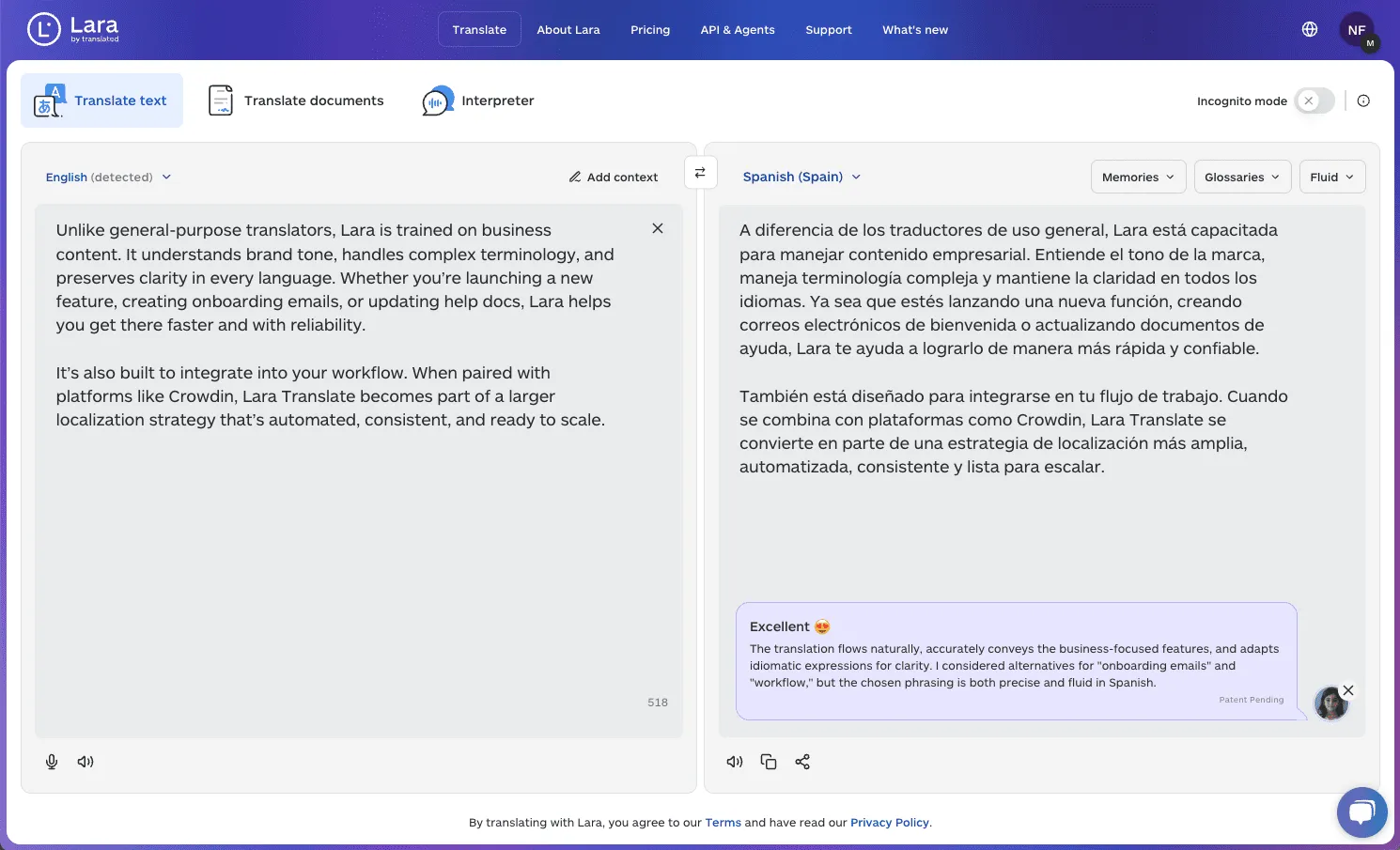
Unlike general-purpose translators, Lara is trained on business content. Originated from ModernMT — the first commercial application of Transformer technology, later made famous by ChatGPT — Lara understands brand tone, handles complex terminology, and preserves clarity in every language. Whether you’re launching a new feature, creating onboarding emails, or updating help docs, Lara helps you get there faster and with reliability.
It’s also built to integrate into your workflow. When paired with platforms like Crowdin, Lara Translate becomes part of a larger localization strategy that’s automated, consistent, and ready to scale.
Navigating Challenges in International Markets
Going global comes with real challenges and it’s better to anticipate them early.
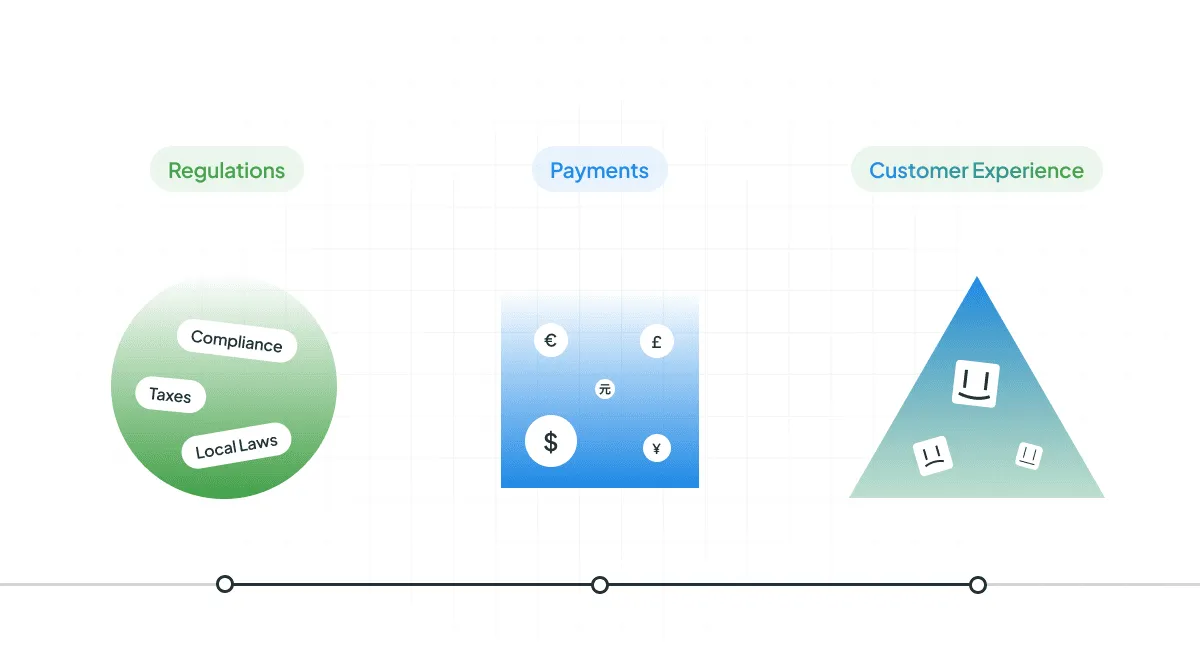
Start with regulations. Every region has its own data privacy laws, consumer protections, and business licenses. You’ll need legal and technical systems in place to stay compliant.
Next, payments. Preferences vary: some markets rely on digital wallets, others on bank transfers or even cash on delivery. Your checkout needs to offer options that feel familiar and safe to your users.
Then there’s customer experience. A message that sounds clear in English might fall flat (or offend) in another culture. Invest in training your support team, work with local partners, and continuously gather feedback to avoid missteps.
Measuring Success and Optimizing Performance
Once you’re live in new markets, how do you measure what’s working?
Look beyond revenue. Track customer acquisition cost by region, retention by language, and engagement by channel. Are localized campaigns performing better? Which countries are converting most efficiently? What content gets shared most often?
A/B testing across languages takes more effort, but it’s worth it. Different headlines, offers, or imagery may work better depending on the audience. Use data to iterate and improve. Not just translate your way forward.
Strategic Steps for Sustainable Global Growth
Global growth isn’t a sprint. The most successful companies take a phased, structured approach.
Start with markets where language, culture, and infrastructure are closer to your own. Use these as learning grounds. From there, gradually expand to more complex or distant regions.
Strategic partnerships can help you enter markets faster — especially if those partners bring local knowledge or access to existing audiences.
And don’t forget talent. Hiring locally or working with consultants in key regions will give you insider insights that no spreadsheet can deliver.
Building an International-Ready Organization
To scale globally, your internal team must evolve too.
Set up workflows that support asynchronous collaboration across time zones. Use tools that localize content without duplicating effort. Build brand guidelines that explain tone and formatting across languages.
Customer support should be in place before you launch in a new region. That means local hours, local languages, and local empathy.
Data privacy and compliance must also scale with you. Tools like Lara Translate are built with these needs in mind, helping you deliver localized content that respects both culture and regulation.
Going global isn’t about being everywhere at once. It’s about showing up in the right way, in the right places, with the right message.
Localization is what connects your big ideas with real people. And with the right tools and mindset, any digital business (no matter the size) can take that step confidently.
FAQ
Is it really possible for small businesses to go global?
Yes. With today’s cloud-based tools, localization platforms, and digital marketing strategies, even small teams can reach global audiences without needing massive resources.
Is translating my website enough to succeed in a new market?
Not quite. Translation is just one part. Real success comes from localization: adapting your entire customer experience—from language and visuals to tone and content structure.
How do I choose which markets to expand into first?
Start where you see traction or demand. Look for markets where your product solves a clear local need. Start small (2–3 markets) and grow from experience.
What role does multilingual marketing play?
It’s essential. Multilingual marketing helps you speak to audiences in ways that build trust. It goes beyond language to include cultural tone, local platforms, and customized campaigns.
What technologies support global digital expansion?
Tools like Shopify, HubSpot, Lara Translate, and Crowdin make it easier to scale your business across regions—covering everything from content localization to customer support and performance tracking.
This article is about:
- Key strategies to grow your digital business across global markets
- The importance of localization and multilingual marketing in user engagement
- How platforms like Lara Translate and Crowdin support global scaling
- Building the tech, team, and processes you need for sustainable international success
Lara Translate
Lara Translate is an AI-powered translation platform built to help businesses scale globally with confidence. Specializing in context-aware translations, Lara combines the precision of machine learning with the nuance of human language to deliver accurate, culturally sensitive content across multiple languages. On the blog, Lara shares insights on localization, multilingual SEO, and the future of AI in global communication.
